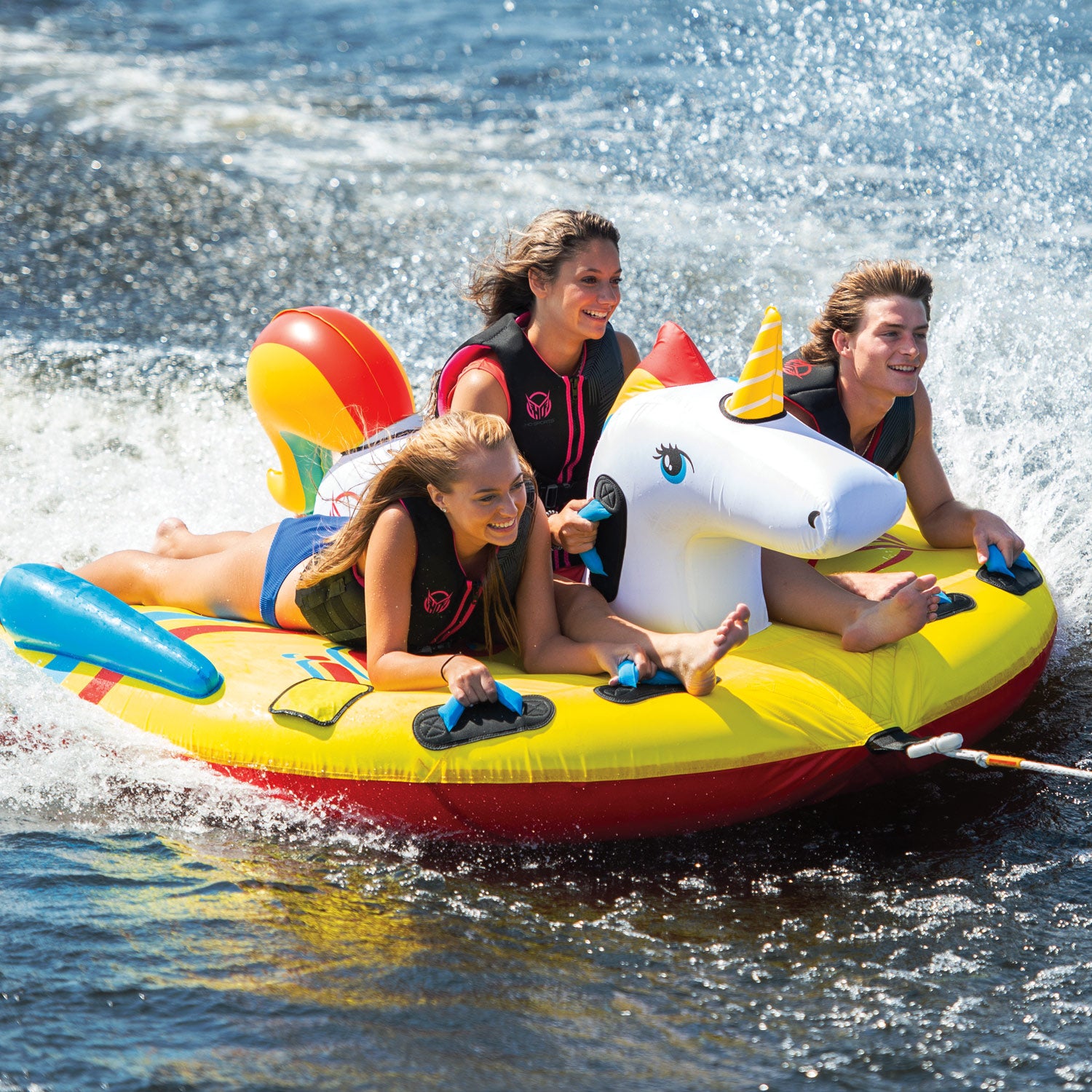Gifting has never been easier
Perfect if you're short on time or are unable to deliver your gift yourself. Enter your message and select when to send it.
The first step in choosing the right wakeboard is deciding where you’ll be riding. Are you wakeboarding behind a boat or at a cable park? This distinction is crucial, as the boards are designed differently for each environment.
Boat Wakeboards: These boards are stiffer, usually made from lightweight foam cores with fiberglass or carbon fiber laminates. The stiffness provides a more responsive ride, ideal for the consistent, predictable wake generated by boats.
Cable Wakeboards: While this guide focuses on boat boards, it’s important to note that cable boards are generally softer and more flexible, often featuring wood cores. Stay tuned for more on cable wakeboards in a future post.
Your skill level plays a major role in choosing the right wakeboard. Beginners should avoid advanced pro-model boards, as these can lead to frustration, falls, and potentially losing your love for the sport.
Beginner Boards: These boards are typically forgiving, with large center fins for extra stability and softer construction materials. They also feature subtle rocker lines, offering smoother transitions and easier control.
Intermediate Boards: Riders at the intermediate level can start experimenting with more aggressive rocker lines for better pop off the wake. These boards typically have edge fins and less channels than beginner boards, providing a cleaner release from the water.
Advanced Boards: For seasoned wakeboarders, advanced boards are lightweight and highly responsive, often made with lightweight and responsive materials such as carbon fibre and CNC'd foams. These boards cater to specific riding styles, whether you’re looking for hard-charging aggression or a more mellow, freestyle feel.
Size matters in wakeboarding. The general rule of thumb is that taller and heavier riders should use larger boards, while smaller riders should stick to shorter boards. Board size impacts the feel, control, and performance, so choose based on your body weight and height for a comfortable ride. See our size guides for each board on the product page!
The rocker line refers to the curve of the board and plays a significant role in how your wakeboard handles. There are three main types of rocker lines:
Continuous Rocker: This has a smooth, consistent curve. Boards with a continuous rocker provide a predictable pop off the wake and smooth transitions, making them ideal for riders seeking consistency and speed on the water.
Three-Stage Rocker: These boards have a flat spot in the middle, allowing the board to sit deeper in the water. This design generates more aggressive pop but can be slower and less smooth in transitions.
Hybrid Rocker: A mix of the two, hybrid rockers offer a blend of vertical pop and smooth transitions, giving you the best of both worlds.
The base of the board impacts traction, stability, and how the board feels during landings and turns. Here are some common designs:
Channels and Chines: These features help with edge control and give the rider more stability when transitioning from toe side to heel side.
Flat Bases: Offer a cleaner release from the wake, making them popular among more advanced riders or those chasing a looser board for a more freestyle ride
The shape of the tip and tail influences both pop off the wake and how the board lands.
Rounded Tips and Tails: These offer softer landings but less pop.
Squared Tips and Tails: These are great for aggressive pops but result in harder landings.
Diamond and Swallow Tails: These hybrid designs combine the best of both, giving you the soft landings of rounded shapes and the lift of squared-off shapes.
Fins help with stability and maneuverability. Most boards come with center fins for added stability, which are great for beginners. Advanced riders may prefer edge fins, which provide better grip and help the board bite into the water when turning.
Center Fins: These provide stability, especially for beginners learning how to control their board heelside and toeside
Edge Fins: Found on the sides of the board, these are great for riders who want more grip and responsiveness into the wakes
At the end of the day, the best wakeboard for you will depend on where you ride, your skill level, and your personal preferences. Whether you're a beginner looking for stability and forgiveness or an advanced rider seeking the ultimate performance, there’s a wakeboard out there for everyone. If you're still unsure, feel free to contact us, or better yet, take a demo board out on the water and see what feels right for you!
Don't miss out on exclusive deals, latest product drops and more.

Gifting has never been easier
Perfect if you're short on time or are unable to deliver your gift yourself. Enter your message and select when to send it.